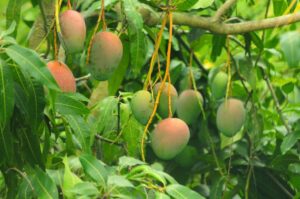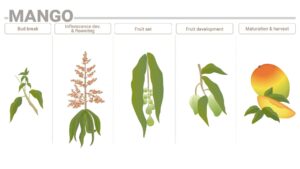Twenty-one years old trees cv. “Carabao”, were fed and irrigated according to the commercial routine. To define the optimal treatment for increasing mango yield and quality, foliar treatments to induce flowering were conducted. A water-soluble NPK (12-2-44), with K fully derived from potassium nitrate, was sprayed at various concentrations, and Boom and Super as local commercial products in the Philippines were sprayed, all as one single application. The control (water) treatment did not flower and the percentage of flowering in ‘Carabao’ mango increased with increasing concentration of PN up to 2,0 percent level. The highest yield was found for the 1,0% spray of 174 kg/tree, with a marketable yield of 150 kg/tree.
The wsNPK 12-2-44 is recommended as flower inducer for ‘Carabao’ compared to standard chemicals due to: high flowering rate at 14 and 21 days after induction, more hermaphrodite flowers, higher fruit-setting and better quality fruits. The recommended dose rate per season; December-April season: 1,0% and 1,5%, July-November season: 2,0% and 2,5%.
 Figure 1. The total yield and marketable yield of ‘Carabao’ mango after one foliar application, PN is the wsNPK 12-2-44 based on potassium nitrate. Columns, means having the same matter(s) are not significant at 5% level using the multiple range test of Duncan.
Figure 1. The total yield and marketable yield of ‘Carabao’ mango after one foliar application, PN is the wsNPK 12-2-44 based on potassium nitrate. Columns, means having the same matter(s) are not significant at 5% level using the multiple range test of Duncan.



